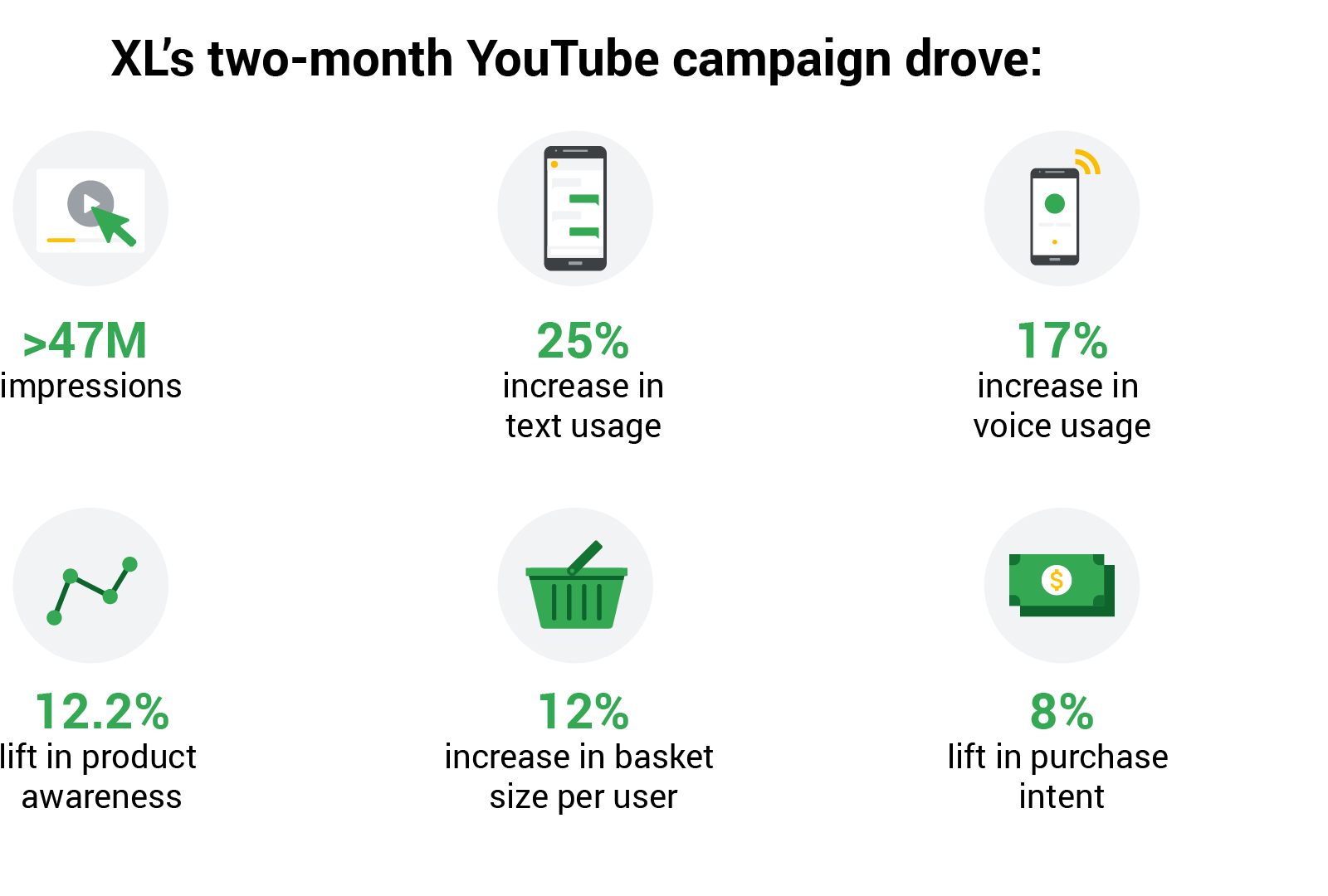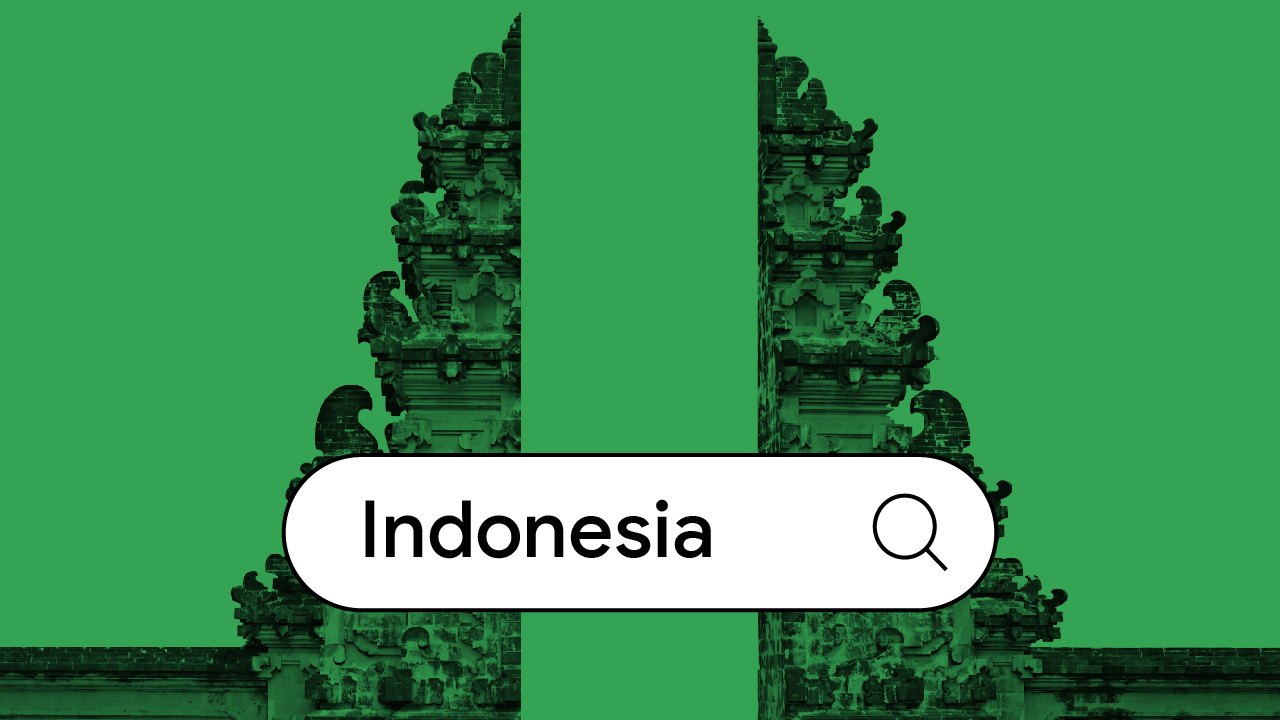As digital alters consumer behavior across Indonesia, the telecom industry needs to transform to stay competitive. Here, Google’s Aryabimo Harfiandi and Yudistira Nugroho reveal how Indonesia’s top three telecom brands — Indosat Ooredoo, Telkomsel, and XL — kicked off their digital journeys.
As consumer behavior changed with the shift to digital, so did the telecom landscape. Suddenly, data usage began to outweigh traditional calling and texting services. According to Boston Consulting Group, global revenue contribution from these services decreased from 70% in 2015 to 50% in 2018.1
To make matters more complex, in Indonesia, there are 400 million SIM cards for a population of 270 million, which means each user has more than one SIM card on average, and 93% of those are prepaid.2 Most telecom companies in the country use distributors, retail outlets, agents, and other offline channels to sell their SIM cards due to low credit card and online banking penetration. Because of this, telecom companies are struggling not only to acquire but also to maintain users with lifetime value (LTV).
To overcome this, brands can use digital to engage consumers throughout their paths to purchase. They must first determine the right channels for reaching consumers, identify the best audience segments on those channels, and ultimately, develop a strategy for reaching — and converting — those high-value users. Here, we show how three of Indonesia’s largest telecom companies, Indosat Ooredoo, Telkomsel, and XL, transformed their marketing with digital — and how other brands can do the same:
Determine the right media mix
Before going all in on digital, it’s important to figure out what works and what doesn’t. For years, Indosat Ooredoo, Indonesia’s second-largest telecom operator, used offline media (OOH and TV ads) and only a small amount of digital ads to reach its core audience of males and females between 18 and 54 years old. But after facing tougher competition in 2018, the company knew it needed to come up with a more effective way to deliver its messaging to consumers, so it decided to conduct a marketing mix modeling (MMM) study with Google and Nielsen to determine which online or offline channels were most effective at driving subscribers.
The MMM study, which measured the return on investment (ROI) and effectiveness of each media channel over the past three years, revealed that Indosat Ooredoo could increase potential ROI 5.5X with digital when compared to offline channels. It also found that search, YouTube, and display could offer 3X ROI compared with other digital media.
Based on these results, Nielsen proposed Indosat Ooredoo shift about 30% of its marketing budget to the channels capable of driving higher ROI. With this optimized spending, Nielsen predicted the brand would see a 60% overall improvement in ROI.
As a result, in 2019, Indosat shifted a majority of its media spend to digital for its 4G relaunch campaign to increase awareness of its improved network. The result: the campaign had 7.5 million views on YouTube in the first two weeks alone (it gathered nearly 17 million views after a little over a month), compared with a previous campaign that received around 1.2 million views over a two-week period.
Reach the right audience with the right message
After identifying what channels work, the next step is identifying the right audience segments for better reach. For example, Telkomsel, the largest telecom operator in Indonesia, has a customer loyalty app, MyTelkomsel, with one of the largest user bases in the country. Customers use the app to see how much data they’ve used and to check how many Telkomsel points they have and where they can redeem them.
Looking to take advantage of the app’s impressive reach, the company decided to drive sales by encouraging users to also buy data packages directly on the app. But with only 3 out of 10 consumers in Indonesia using online channels to buy their mobile data,3 Telkomsel had to first figure out which of its customers might actually be interested in its data packages.

To do so, Telkomsel used Google Analytics 360 to understand how users engage with its ads, from first impression to click to the point of purchase. From there, the company split users into 15 different segments (based on historical revenue and estimated LTV, among others) across five product categories (Kartu Halo, Simpati, Kartu As, VideoMax, and GameMax data packages) and served them tailored search ads. For example, if Telkomsel were to serve a customer who typically spends IDR100K an ad for an IDR50K plan, it could lead to loss of revenue if the customer bought the lower value plan, so users were only served ads for plans higher than their actual spends. In the end, the digital campaign generated around 4X ROAS across all five product categories.
Identify high-value audiences and cater to them
Today’s technology allows brands to reach consumers depending on how much they are likely to spend and on which products. By catering to these high-value audiences specifically, brands can boost ROI and even win customer loyalty. That’s what XL did when online messaging apps offering free calling and texting services were affecting its bottom line. To entice consumers to use its legacy services again, the company launched a YouTube campaign promoting its “super ngobrol,” or “super chatty,” campaign offering, which allowed users to call other XL customers for free. The goal was to reach high-value audiences, or consumers who typically spend more than average users on such services.

Using YouTube’s Director Mix tool, XL was able to use three creative templates to generate 71 unique ads and serve them to 27 different affinity audiences, including music lovers, travelers, sports enthusiasts, and technophiles. The two-month campaign drove 47.1 million impressions and a 12.2% lift in product awareness. It also drove an 8% lift in purchase intent and a 12% increase in basket size per user. In total, the campaign generated a 17% increase in voice usage and a 25% increase in text usage.
Discovering the value of digital
Indosat Ooredoo, Telkomsel, and XL proved that it’s possible for players in traditional industries to embrace digital. While large companies may be tempted to stick to their tried-and-true marketing methods, changing consumer behaviors make it necessary to adapt to meet Indonesians’ needs. Thankfully, digital has made it easier than ever to measure and optimize campaigns, empowering marketers to make informed decisions about their investment strategies.








